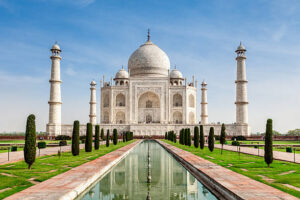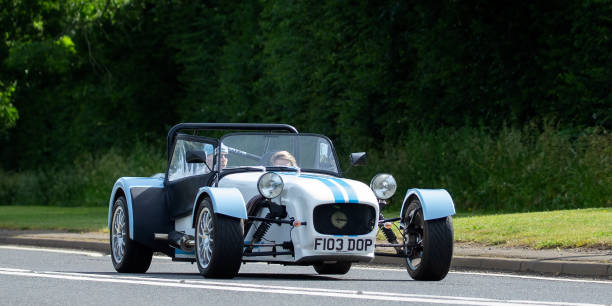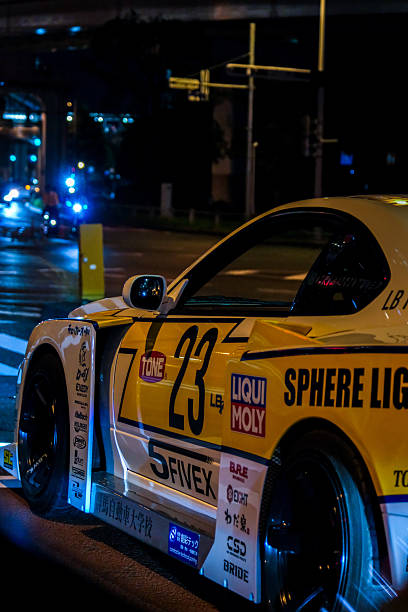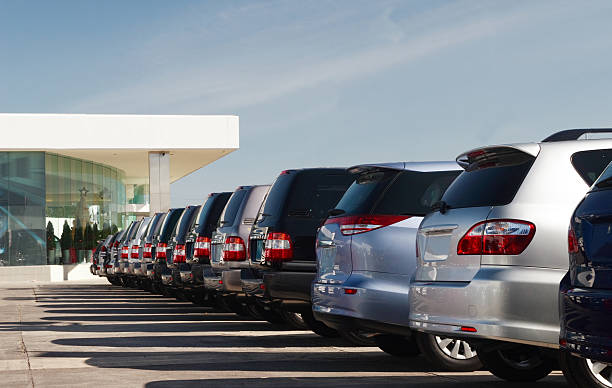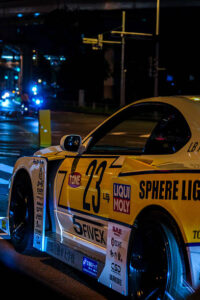Films and TV shows have long influenced public perception of cars and driving. Through visual storytelling, they shape how audiences view automobiles as symbols of freedom, power, and identity. Cars become characters themselves, reflecting personalities and aspirations. These stories embed car culture deeply in societal consciousness, inspiring generations to relate to vehicles beyond transportation.
Cinema creates emotional connections to cars by dramatizing speed, style, and rebellion. The portrayal of cars in races, chases, or cruising scenes often ignites passion for car modification and customization. Over decades, this emotional imprint encourages fans to see cars as extensions of their own self-expression. The cultural significance of vehicles grows as they appear in iconic storylines.
Visual media also impacts trends in car design and technology. When viewers see sleek, futuristic cars on screen, demand for such models can rise. The excitement generated by films and shows often transcends entertainment, influencing automotive marketing and consumer preferences worldwide. This reciprocal relationship drives both film content and car culture evolution.
Early Hollywood and the Birth of Car Culture
In early Hollywood, cars symbolized modernity and independence. Silent films featured daring chases and stunts that thrilled audiences, showcasing cars as tools of adventure. These early depictions planted seeds for fascination with speed and risk-taking, laying groundwork for future cinematic car culture. Vehicles were often portrayed as essential to the American dream.
The 1950s introduced the muscle car era on screen, reflecting post-war optimism and youth culture. Films celebrated fast, powerful cars as symbols of rebellion and freedom. Teenage characters bonding over cars became a recurring theme, helping shape a generation’s car culture. The automobile was no longer just transportation but a lifestyle statement.
Drive-in theaters further cemented car culture by merging film and social experience. Cars became both viewing spaces and cultural icons. The ambiance of night-time cruising and movie watching reinforced the romanticism of cars in American life. This unique interaction helped solidify cars as essential to social identity.
The Fast and Furious Franchise: Modern Car Culture
The Fast and Furious series revolutionized car culture for millennials and Gen Z. Its focus on street racing, car modification, and loyalty resonated globally, highlighting underground racing subcultures. The franchise blends high-octane action with personal stories, enhancing emotional investment in the cars themselves and the culture they represent.
With diverse casts and international settings, the series broadened car culture’s appeal. It introduced audiences to various car styles and racing techniques, fostering cross-cultural appreciation. The films encouraged viewers to explore their automotive passions, from tuning to racing, emphasizing community and family values.
Beyond entertainment, Fast and Furious influenced real-world car trends, boosting interest in import tuning and performance upgrades. Car meets and racing events gained popularity as fans sought to emulate the films’ adrenaline-filled scenes. The franchise’s impact endures, shaping modern car enthusiasm worldwide.
Iconic TV Shows That Defined Car Enthusiasm
TV shows like “Knight Rider” and “Miami Vice” defined car culture by showcasing futuristic or stylish vehicles as extensions of character identity. “Knight Rider’s” talking car represented cutting-edge technology and companionship. These shows sparked viewers’ imaginations and influenced their automotive interests and aspirations.
“Miami Vice” integrated fashion and sleek cars, elevating vehicle aesthetics to new heights. The portrayal of cars as status symbols and lifestyle statements attracted viewers to luxury and exotic cars. These series underscored the link between personal style and car culture, influencing trends in both.
Car-focused reality shows like “Top Gear” brought practical and entertaining car reviews into homes worldwide. Their mix of humor, challenges, and exotic cars captivated diverse audiences. This format promoted car knowledge and enthusiasm, helping nurture a more informed and passionate fan base.
Car Chases: Cinematic Thrills That Excite Audiences
Car chase scenes are a staple of action films, thrilling audiences with high-speed pursuits and precision driving. These sequences showcase cars’ capabilities, emphasizing power and control under pressure. Chases create adrenaline-fueled moments that keep viewers on the edge of their seats.
From classics like “Bullitt” to modern blockbusters, car chases have become cultural touchstones. They highlight the synergy between cars and human skill, creating legendary cinematic moments. These scenes inspire viewers to appreciate driving dynamics and the artistry behind vehicle handling.
The popularity of car chases has also influenced automotive safety and design innovation. Car manufacturers use chase scenes to demonstrate durability and performance. These portrayals contribute to the mystique and allure of particular car models, boosting their desirability.
Representation of Car Culture Across Different Generations
Each generation experiences car culture differently based on the films and shows popular in their youth. Baby Boomers grew up with muscle car icons, associating vehicles with freedom and rebellion. Generation X saw the rise of TV car heroes symbolizing coolness and tech-savvy.
Millennials and Gen Z relate to street racing and customization showcased in recent films and online media. Their car culture is influenced by technology, diversity, and social media connectivity. These evolving representations reflect changing values and interests in automotive culture.
Despite generational differences, the emotional connection to cars remains constant. Films and TV serve as cultural mirrors, reflecting each era’s unique car enthusiasm while uniting people through shared automotive passions.
Cultural Diversity in Car Media and Its Impact
Car culture in film and television has increasingly embraced cultural diversity, showcasing different communities and their automotive traditions. This broadens perspectives and enriches the global car culture landscape. Representation helps break stereotypes and fosters inclusion within car enthusiast circles.
Movies like “The Fast and the Furious” celebrate multiculturalism through diverse characters and racing styles. This inclusivity resonates with worldwide audiences, creating a sense of belonging and shared identity through cars. It also inspires new narratives and innovations in car culture.
Diverse storytelling also highlights different car types and tuning cultures, from lowriders to drifters. This variety enriches the global appreciation of automotive art and performance. Cultural diversity in media drives creativity and cross-cultural collaboration within car communities.
The Role of Nostalgia in Car Culture Films
Nostalgia plays a powerful role in how films and shows connect audiences to car culture. Revisiting classic cars and styles in modern media evokes memories and emotions linked to past eras. This emotional resonance strengthens personal and collective car identities.
Reboots and sequels often rely on nostalgic appeal to attract audiences. Iconic cars become symbols of heritage and timeless appeal. This keeps legacy models relevant, encouraging collectors and new fans to engage with classic automotive culture.
Nostalgia also influences car restoration and preservation trends. Fans inspired by films work to revive vintage cars, preserving cultural history. The cyclical nature of nostalgia keeps car culture vibrant and connected across generations.
The Influence of Music and Car Scenes in Films
Music and cars share a unique cultural connection, often amplified through film and TV. Soundtracks accompanying driving scenes heighten emotional impact and create iconic moments. The right song can define a car scene’s mood and enhance its cultural significance.
Drive-in movies and road trip films often use music to celebrate freedom and adventure. This combination embeds cars within broader lifestyle narratives, linking auditory and visual culture. Fans associate specific tracks with car experiences, deepening their cultural connection.
Musical genres like rock, hip-hop, and electronic music frequently intersect with car culture. Films blending these elements promote car lifestyles that resonate through sound and imagery. This synergy helps define generational car culture identities.
Technology and Cars: Sci-Fi and Futuristic Visions
Science fiction films and TV shows portray cars as symbols of future technology and innovation. Vehicles with advanced capabilities inspire imaginations and shape expectations for automotive progress. These futuristic depictions influence real-world automotive design and technology development.
Shows like “Blade Runner” and movies like “Back to the Future” showcase cars that transcend conventional limits, inspiring engineers and enthusiasts alike. Flying cars, AI integration, and self-driving features become cultural aspirations shaped by media portrayals.
Such futuristic visions fuel excitement for emerging technologies and sustainability in car culture. Media acts as a bridge connecting fantasy with automotive innovation, motivating generations to embrace technological advancements.
Car Commercials vs. Films: Different but Influential
While films focus on storytelling, car commercials concentrate on brand identity and consumer appeal. However, both use cinematic techniques to influence car culture. Commercials create desire through aspirational imagery and highlight features that resonate with buyers.
High-production commercials often mirror film aesthetics, blending emotion and spectacle. This synergy enhances brand recognition and car culture influence. Some commercials become culturally iconic, shaping public perceptions like films do.
Together, films and commercials guide automotive trends, fueling enthusiasm and consumer behavior. They complement each other in reinforcing car culture’s evolving narrative and significance.
The Rise of Car YouTube Channels and Digital Media
The digital age has transformed car culture through YouTube and social media. Channels dedicated to car reviews, modifications, and races engage millions, democratizing car culture access. This shift builds communities and influences trends in real time.
Unlike films, digital media allows direct interaction between creators and audiences. This immediacy fosters deeper engagement and personalized content. Car enthusiasts share experiences, advice, and innovations, accelerating culture evolution.
Digital platforms also introduce younger generations to car culture in dynamic ways. They complement traditional media’s influence, ensuring car culture remains vibrant and adaptable in a changing media landscape.
Conclusion: The Enduring Legacy of Car Culture in Media
Films and TV shows have continually shaped how generations perceive and engage with cars. Through storytelling, technology, music, and diverse representation, media embeds cars deeply into cultural identity. This ongoing influence nurtures passion and innovation within car culture worldwide.
The emotional bonds formed on screen translate to real-world enthusiasm, driving communities and trends. As technology and society evolve, media will continue to redefine and celebrate car culture for future generations. The relationship between cars and storytelling remains timeless and powerful.



